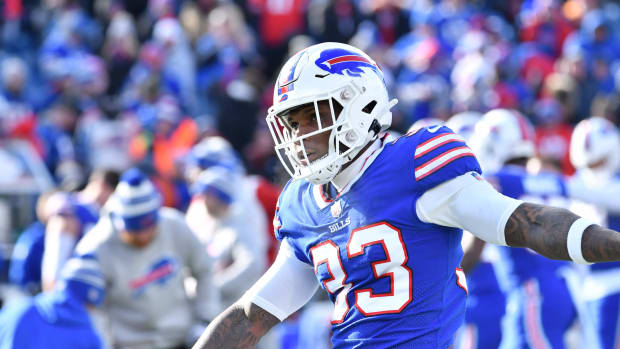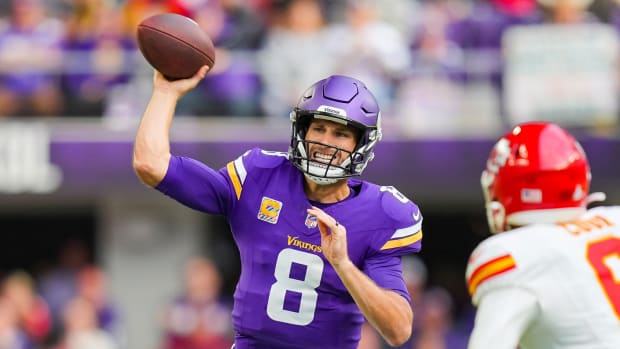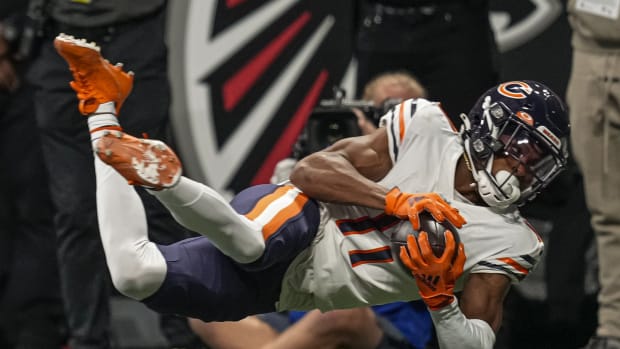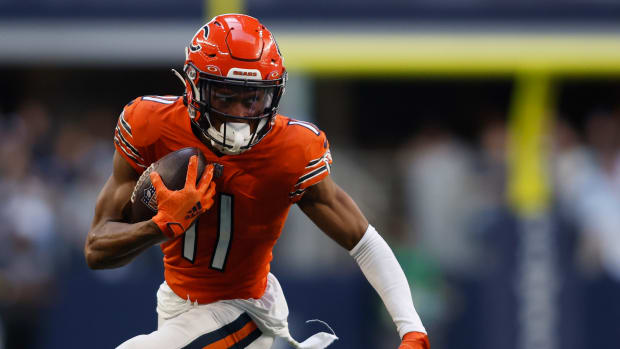The Falcons must trade out of the 16th overall draft pick
The Falcons currently sit at the worst possible position in the first round of next week’s NFL Draft. Especially given their needs.
With the 16th overall pick, Atlanta will surely look to bolster its leaky defense by grabbing an edge rusher, defensive back or linebacker, but with the way the talent pool in this year’s class is shaking out, any prospect they claim would likely be available ten picks later.
In other words, the Falcons will be reaching with their first round selection.
The solution?
Trade.
Whether they trade up or down doesn’t matter. What’s important is that they move out of the middle section of the first round. Either way, they will be in better shape.
If they trade up, they can land a surefire defensive star. If they trade down, they can stockpile another pick this year and probably end up with a prospect the Falcons’ front office would have taken had they stood pat.
Earlier this week, Ian Rapoport reported that the Falcons are in a position to move up, given many of the top players that fill their needs will likely be drafted already halfway through the first round.
This train of thought makes sense. There’s a sizable talent gap between the top players at defensive positions this year and the rest of their peers, particularly in areas of need for Atlanta.
According to SI’s “Big Board,” former Clemson linebacker Isaiah Simmons is the fourth best prospect in the draft. The next closest ‘backer is LSU’s Patrick Queen at 18, and no one in this draft or most others is as versatile as Simmons.
At defensive end, Chase Young claims the top spot in the draft class. K’Lavon Chaisson from LSU is the next top edge rusher, checking in at 17 on SI’s list.
Ohio State’s Jeff Okudah is the unquestioned top corner in the draft. Pundits have argued who claims the second spot between Florida’s C.J. Henderson and LSU’s Kristian Fulton, but one of these players should be there at 16, most likely Fulton.
Simmons, Young and Okudah are a cut above the rest of former college stars at their positions. If the Falcons are truly committed to upgrading their defense through drafting a bona-fide star, their best bet to do so would be through one of these three players.
They can’t do that with the 16th overall selection.
Say, however, Arthur Blank falls in love with Oklahoma linebacker Kenneth Murray. Or maybe he decides Iowa’s A.J. Epenesa is the best edge rusher not named Chase Young.
In this case, the Falcons find themselves in a predicament. For the first round, prospects like Murray or Epenesa have a pretty good shot of remaining on the board for the next handful of picks, but the likelihood they are still there by the time the Falcons choose in the second round is low.
Picking Penn State defensive lineman Yetur Gross-Matos at No. 16 might be a little rich, but he could be the right fit at No. 26. If they wait until the second round on him, he might be gone.
So why spend a mid-first round pick when you can get the same value a few picks later and add another selection?
It seems like a no-brainer, especially given the draft situation the Falcons currently find themselves in. After trading for tight end Hayden Hurst earlier this offseason, Atlanta possesses just six total picks. With significant question marks around the roster, one more draft pick could pay dividends as soon as next season.
By trading down, the Falcons would still get a solid defensive prospect and would also gain the capability of finding a future starter later in the draft.
This ability to add depth isn’t an option should Blank and the Falcons’ front office stick to their guns at No. 16.
They also can’t get a top-10 prospect where they currently sit.
So whether they trade up and make a splash or trade down and add depth, one truth is certain--there’s no reason to remain at No. 16.
At Falcon Report, we want to provide you with the best Atlanta Falcons experience. Please take this short survey of five questions to let us know how we're doing. Take the Survey




